

1051 Nathan Dean Pkwy
Rockmart (770) 684-7377



707 Edelweiss Strasse
Helen (706) 878-3456




1051 Nathan Dean Pkwy
Rockmart (770) 684-7377



707 Edelweiss Strasse
Helen (706) 878-3456

2 GSFA Officers
3 GSFA Contact Directory
7 Leadership Messages
31 Finding Motivation in Slow Fire Departments
37 PPE Contamination Research
53 Artificial Intelligence's Role in Fire Safety
New research finds that your PPE gear could be more contaminated than you think. Find out more on page 45. Vol. 51, No. 4 •
61 Flashover: When it's Time to Get Out The Official Publication for the Georgia State Firefighters Association


The Georgia Firefighter is the official medium of expression for the Georgia State Firefighters Association and is published by Public Safety Services, LLC.. Editorial contributions will be handled with reasonable care; however, the publisher assumes no responsibility for the safety of artwork, photographs, or manuscripts. Copyright © 2024, Public Safety Services, LLC. All rights reserved.


Gary Clark President Homer Vol. Fire Department
Mike Byrd 1st Vice President Spalding County Fire Department
Craig Dukes 2nd Vice President Thomasville Fire Rescue
Jeff Hardin 3rd Vice President McRae-Helena Fire Department
David Bullard Past President Columbia County Fire Rescue
Jason Amerson Director at Large Cartersville Fire Department
Bruce King Treasurer Bartow County Fire & Emergency Services
Ronnie Cowart Chaplain GPSTC
Jason Shivers Parliamentarian Forsyth County Fire Department
Taylor Moore Business Manager AAM
gjclark633@gmail.com
mbyrd@spaldingcounty.com
craigd@thomasville.org
jeff.hardin@mcrae-helena.org
dbullard@columbiacountyga.gov
404.391.6652 jamerson@cityofcartersville.org
404.391.0101 kingb@bartowcountyga.gov
404.391.6679 rcowart1@outlook.com
404.392.4456 rjshivers@forsythco.com
402.499.9120 taylor@gsffa.org
Office Address: Current Mailing Address: 521 First St. PO Box 681 PO Box 10 Appling, GA 30802 Milford, NE 68405
GSFA Phone: 770-914-7774
GSFA Staff Email: info@gsffa.org



















Practicality of objectives is a crucial benchmark in developing training and responding to incidents. While there is instruction during hazmat training and the fire officer series on making measurable, flexible, and attainable objectives, this doesn’t always get carried out.
This isn’t to say that every incident we respond to has to

have written objectives. Most things that we respond to, we should have the objectives fairly memorized and committed to muscle memory.
Complex incidents or incidents that fall outside of our norm, definitely need a written set of objects.
How do we set the objectives to mental and muscle memory? Training, of course.
If you have taken the instructor curriculum, you learned about enabling and terminal performance objectives. What about when developing a company drill, a training night, or even an impromptu training?
Have a couple objectives that you want the training to meet, and the attendees/students be able to perform, demonstrate, recite, or whatever











verb you choose. A mistake of many new instructors is that present a training session how they would handle a situation. The correct approach is to teach what to do, what to think, or what options there are and the measure to student to the chosen verb in the objective.
When teaching from a prepared curriculum, many instructors (me included) have a bad habit of skipping through the objectives. This should not be done. While you may cover all of the material exceptionally well, the students don't necessarily know what it is expected of them. If you cover the objects, the students know what they are expected to gain from the training session.
For example, while homeschooling my eight-year-old, she expects the objectives for each chapter in her schoolbooks to be explained. If I try to skip the objectives, she will protest and demand that I cover them. Perhaps more students should be this way.
If we are good at stating objectives in training, then it should prepare us for being able to develop and convey good objectives at an incident. When assigning resources at an incident, we are doing to meet an objective, whether it is memorized, formed mentally, or written down. Train to the objectives and respond based on objectives for the most successful outcomes.
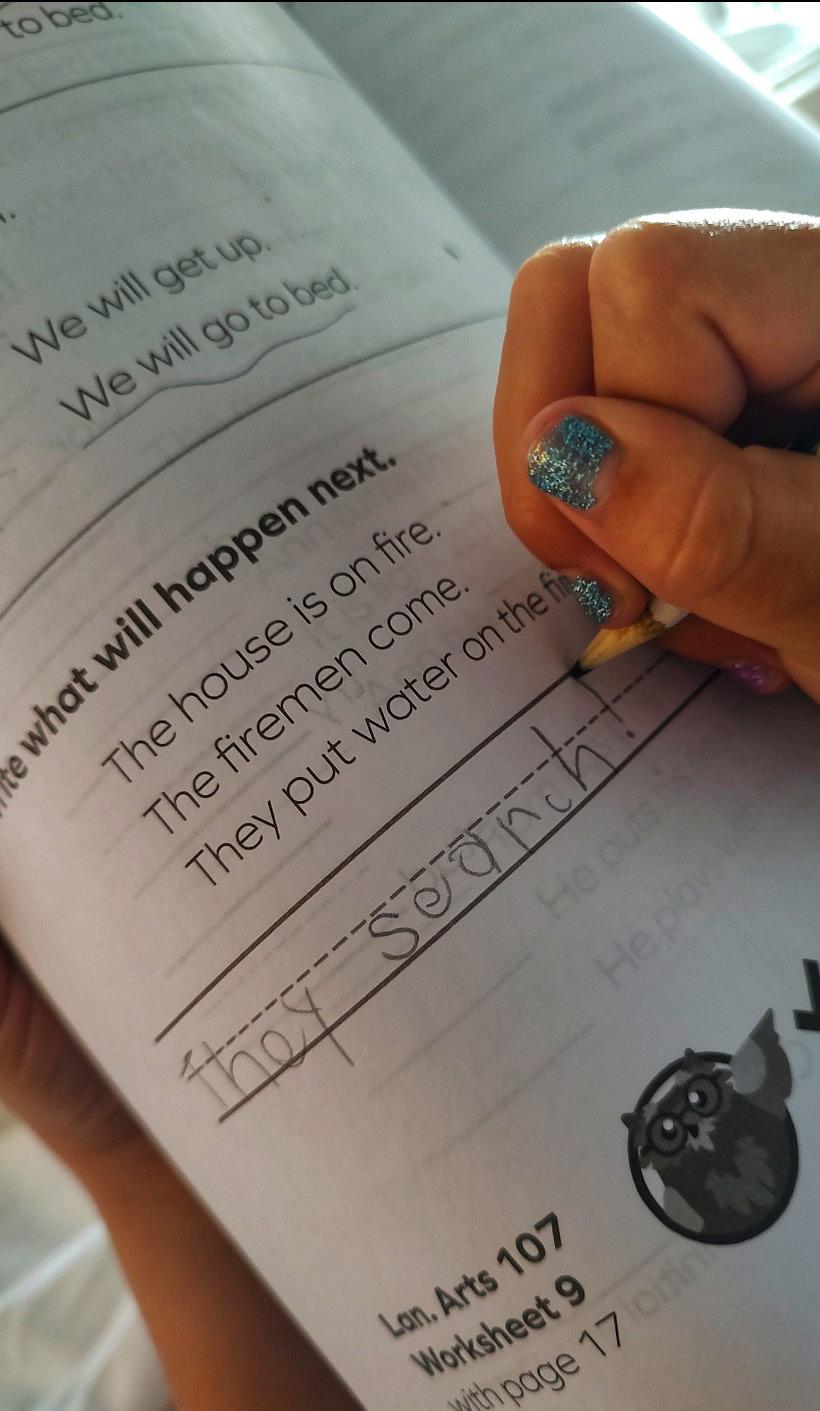


























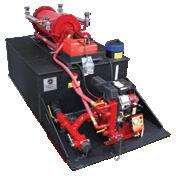









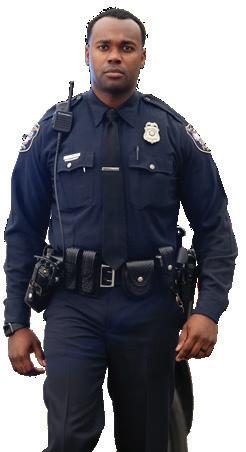




I would like to start by saying I reached out to a new friend and asked him if I could share this bit of his Wisdom and Knowledge with you.
If we all had our own board of directors in our lives, life would be so much less challenging. I encourage you to read and follow. This writing was inspired by many leaders in the fireservice.
• Joe Starnes
• Alan Brunacini
• Jim Mastin
• Dennis Rubin
• Bruce Varner
• Jerry Tracy
• Jason Caughey
I submit to you:
The Board of Directors
In an organization, the larger decisions are often made by a group of members who collectively can render the best decision based on their wealth of experience and knowledge. This is commonly known as the board of directors. They often provide direction and guidance for others as well as the organization. There are many good and bad examples of organizations whose board of directors have either led them successfully

or have driven them into the ground.
In our lives, we can learn a great deal from the ‘board of director’s’ analogy. To understand our purpose, to stay accountable, and to stay encouraged, we all need a board of directors in our lives. They can provide wisdom, guidance, support and valuable advice.
Their "life experiences" serve as a model for us and when they speak to us, we respect their opinion for they have earned our trust.
As in any organization we should be very cautious in choosing who serves on our board of directors. These individuals may serve indefinitely, or they may only serve on ‘our board’ for a few years; but having a ‘board of directors’ in our lives is a priceless commodity.
In the fire service, the value of having a personal ‘board of directors cannot be overstated. As a young and upcoming firefighter, it is tremendously valuable to have a ‘board of directors’ who provides the proper guidance, training, and advice.
The future of a young firefighter could be steered in a disastrous direction without proper counsel
and support. For example, if one who is passionate and energetic about the calling of a firefighter becomes involved in a poorly led department with negative peers they may be tempted to fall into the trap of bitterness. Their passionate vision for the fire service may be snuffed out by being in a ‘vent limited’ environment.
It is truly sad to consider how many future leaders of the fire service may have given up due to the lack of support that they so desperately needed early on in their career.
As one moves forward into positions of leadership in the fire service the value of having a ‘board of directors’ becomes even more important. In organizations, corporations, and the fire service as we move up into positions of greater accountability our board of directors may become smaller.
As a firefighter we may have had ten trusted brothers or sisters we could call upon but now as a Battalion Chief we may have three individuals that we have absolute trust to share our burdens with.
In 2010, the author found himself in a dangerous position; discouraged, bitter, and with only one member on his board










of directors. This led to many changes in his life. This writing is to encourage others and provide anyone, firefighter or not, with a principle-based support system for life.
An individual’s ‘board of directors’ is based on understanding his or her strengths and weaknesses. A wise mentor once said that before I got promoted that I needed an ICN: An Informal Captain’s Network. He instructed me to choose five trusted senior Captains (some active and some who are retired) and reach out to them. I learned to keep their phone numbers close and maintain this relationship by continual communication.
This has been tremendously valuable to myself and has helped me through some very difficult situations (personally and professionally). I then began to understand that my personal board of directors needed to be based on areas in my own life where I needed constant guidance, support, encouragement, and accountability. Thus, the board of directors follows the following format:
This individual is the ‘go to’ person for the big decisions of life. This person must have paid their dues through adversity, trials, failures, success and be willing to share those moments with you. For me this person is my father: Joe Starnes. He has checked on me every day of my career by calling me each morning after my shift. I am blessed with an hour
ride home in which I have often spent that entire hour talking with him. It has been the best Critical Incident Stress Management Program that I could have. When my father goes to heaven, God will place an extra star in his crown for all that he has done in the service of others. For he has paid it forward especially in my life.
When we face tough questions or situations in life what would we give to be able to pick up the phone and call the Chief of a large department and receive their counsel? The world of social media has allowed many of us to establish relationships and bonds of friendship with fire service visionaries. It has blessed me greatly and I am so thankful that I have several members of the fire service that I can call who will take the time to speak with me on matters of leadership.
It has been said that when an elderly person dies, the world
should mourn as if a priceless library of artifacts has burned down. If you have someone in your life that has faced great adversity (World War II veteran, retired leader of an organization, etc.) consider yourself blessed. Go and reach out to them. Sit and listen to their life story and take notes. Our next lesson in leadership can either be paid through trial and tribulation or learned from the dues paid by someone much wiser than ourselves.
Everyone will face hard times in their life at some point. The question for us all is this: “Do we let them destroy us or refine us?” It is when we are knocked down in life that we realize that our brotherhood of encouragement is so important.
Many individuals have given up, lost hope, and made decisions that have had terrible consequences for their life. By having a strong support network of en-













couragement, we can get through these dark times.
“Two are better than one because…For if either of them falls, the one will lift up the other.”
(Ecclesiastes 4:9)
For myself, I have three individuals that periodically check in on me. They know my mannerisms, my behavioral issues, and all of my past demons; and surprisingly enough they are still friends with me. I am blessed that we check on each other with a phone call, breakfast after our shift, or a random visit to my house. They are angels on loan to me in my life and I cannot thank God enough for them.
Remember, a kind word costs us nothing but the dividends they pay are eternal.
"Carry each other's burdens, and in this way, you will fulfill the Law of Christ" Galatians 6:9
Establishing Accountability: This is one of the most overlooked positions on an individual’s personal ‘board of directors. Many of us want to receive guidance, encouragement, and support but we don’t like to be held accountable.
In the fire service and in our lives, if we do not have accountability measures in place we are headed for disaster. In my own life, I am well aware of my weaknesses and sinful nature. I have come to understand that “I cannot possibly serve another in unfamed humility if I seriously regard their sinfulness as worse than my own” (Dietrich Bonhoeffer).
Therefore, it is not only necessary but vital to have an accountability group. I am blessed to have a few brothers that hold me accountable in my faith, in my
family, and in the fire service. They do not hesitate to inform me when I am slacking, heading in the wrong direction, or if I am blatantly wrong. They are the most important members of my ‘Board of Directors.’
All the things that matter in my life hinge upon my ability to be obedient to God, the people I love, and my calling. I can say that without these trusted friends I would have been lost.
"A rebuke goes deeper to an understanding person than a hundred lashes to a fool” (Proverbs 17:10). I have grown tired of the lashes and welcome my accountability member’s rebuke.
In closing, I share these words with you not to condemn or criticize anyone but to share my own personal failings in life. I know that I am blessed to be where I am and that I do not deserve the wonderful faith, family, and fire department life that I have but for some reason God has allowed these blessings in my life. I look back upon my regrets and my mistakes and now realize that if
I had listened to instruction and had a ‘board of directors’ that I would have suffered less and learned even more.
It is my hope and prayer that you would seek out your own personal ‘Board of Directors.’ Approach them with an attitude of humility and seek their guidance. And most importantly, when they share their counsel with you; don’t disregard it! They earned that wisdom through painful trials and tribulations and their hope is we will not make the same mistakes as they did.
Let us pay it forward by embracing their wisdom and applying in our own lives; thereby paying them the respect and honor that they deserve.
May God Bless You All! Andy J. Starnes
Thank you for taking the time to read!
Gary J. Clark President
Georgia State Firefighters Association















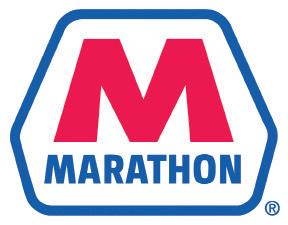


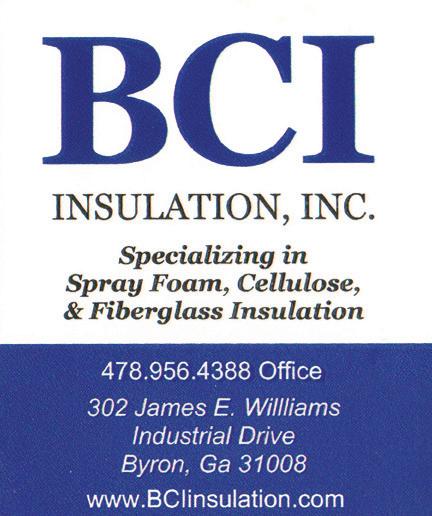

















Reading the title of this article, your first thought is that "CEO" stands for Chief Executive Officer. However, this article has nothing to do with becoming a ranking position within your department. In this article, CEO stands for becoming the "Chief Energy Officer" (Gordon, 2007).
As silly as that may sound, as last month's article mentioned, Are you a Dave Gray? While negativity is an infectious disease within the fire service, positive energy is even more infectious.
A book called "The Energy Bus: 10 Rules to Fuel Your Life, Work, and Team with Positive Energy" is a must-read for all fire service personnel. It offers ten rules on how to be a positive influence within your family, community, and department. Please take the time to read this book. The ten rules are simple yet challenging, even for the most dedicated firefighter.
Positivity in the fire service is problematic because, many times, positive ideas are met with a negative brick wall. How often have you left a class or conference enthusiastic and motivated just to get hit in the face by the

negativity greeting you at the station? The same old comment, "Do not try to bring that crap you learned back; it will not work here." Then you find yourself demotivated, like someone just popped your balloon, and all the positive energy left immediately.
The book suggests that everyone emits positive and negative energy (Gordon, 2007). This energy can influence others without knowing they are being influenced. Reading this information explained many questions.
Have you ever met a young, energetic firefighter who is new, fresh, and ready to embrace the profession, then six months later, they are different people? Suddenly, they complain about minor issues or even things they have not seen for themselves.
They are suddenly talking differently and might even have started cussing when they did not before. They have been exposed to an "energy vampire" who, instead of draining the blood out of their victims, drains all of the positive energy (Gordon, 2007).
Become the "Chief Energy Officer" of your department (Gordon, 2007). Start spreading positive energy and forming alliances with those in your department, like yourself. The first rule
in The Energy Bus is, "You are the Driver" (Gordon, 2007).
That means do not let anyone else steer your attitude. It is your choice to be positive or negative. If you find yourself slipping to the negative side, fight back and remember all the blessings of being a firefighter. Firefighting is one of the most honorable professions in the world.
Look past the pay, especially if you are a volunteer, and those bad calls when you see things humans should not have to see. You get to make a difference in someone's life. You get to watch a child's face light up when they see a fire truck or have the chance to talk to a real firefighter. You have a purpose that is, above all, service to others. Not to mention, the toys are pretty cool too!
So, how do you spread positive energy at your department? You invite others in the department to join you on the ride (Gordon, 2007). Seek out people to take the journey of being positive along with you, and you may be surprised by how many are looking for someone to elevate their attitude.
Even if they do not see it now, when they see you so happy, they will become curious and want to know why you are so satisfied.










Hopefully, you have witnessed highly motivated people who are positive and feel that energy. The fear of being labeled a "company man" may have also deterred you from being that person. Sadly, some of the most popular department firefighters can also be "energy vampires.” For whatever reason, they enjoy dragging people down with them; misery loves company, as they say.
Another way to attract others to be a CEO is to be enthusiastic in everything you do. People may laugh or criticize you for it; do not let them drag you down. Over time, more people will want to be around someone who is positive and enjoying life rather than always being negative (Gordon, 2007). You will find you will enjoy your job much more.
Retired Battalion Chief Dennis Worsham of the Clayton Fire Department would frequently approach his crews on fire scenes when they were exhausted and say, "Can you believe we get paid to do this? Do not tell anyone". He was always enthusiastic and proud to do his job. He was not always that person, but later in his career, he became a CEO.
Lastly, to become a CEO, have more fun and enjoy the ride (Gordon, 2007). If you are unhappy and do not enjoy what you are doing in the fire service, leave. Whether you do it for free or for a paycheck, life is too short to do something that does not make you happy.
If you look at your department's negative “energy vampires, " you may conclude that they are unsatisfied. No one was drafted into this profession. You have the freedom to stop doing it anytime you wish. Many
firefighters use the 24/48 schedule as an opportunity to work a part-time job. However, far too many career personnel use the fire service as a secondary job to earn benefits and view it as a day off from their “real” job.
Stop taking a spot from someone who could love and bring passion to the job. Whether in a firefighter or officer position, far too many other career choices pay well: learn a new trade and leave.
This article may seem silly to some, but when you stop and think about it, why does the firehouse breed negativity? Change it up and commit to leaving a legacy of breeding positivity. Many CEOs are already in the fire service; some need a nudge to start being more open about loving what they do, while others who are already openly positive need support. Step up and publicly join them while they are showing their pride and enjoying "the ride."
You will find that being positive and appreciating what you have will spill over into other parts of your life. In last quarter's article, a great person named Dave Gray was referenced, who is fighting cancer and can no longer be a firefighter. He would give anything to be able to do the job again.
Do not find yourself retired or unable to fight fire anymore, regretting the time you wasted. Find a way to be happy by appreciating all the blessings of being a firefighter. Stop focusing on the negative that any profession will bring with it because life is too short to be unhappy. Seek daily to be a CEO for the profession and infect others with your positive
outlook while defeating the negative “energy vampires” (Gordon, 2007).
I hear that you are not allowed to put a stake through the hearts of these individuals, so kill them with positive energy. Stay safe.
References
Gordon, J. (2007). The energy bus: 10 rules to fuel your life, work, and team with positive energy (1st ed.).
Wiley .












I want to personally thank each and every one of you for the tremendous job that you do each and every shift, and to thank your families for how they sacrifice and support each of you through your fire service careers.
During my tenure on the board, I have clearly affirmed that this is a strong, progressive organization comprised of dedicated professions who are truly here to serve and protect the Georgia Fire Service. I truly believe that this association can be recognized as an innovative and leading association, locally, regionally, and nationally based on the quality of personnel who serve you.
To some of you, the fire/ rescue profession will be more emotionally, academically, and physically challenging than anything you have ever done in your life.
But by being a firefighter, you have accepted the responsibility to meet the rigid standards set forth in the professional fire service. In order to succeed you must also accept the challenges that are

presented in order to set the benchmark for others to follow, realizing that the information and training you receive is directed toward making you an effective and efficient member of the Department and the community you serve.
It is essential that you make the commitment to continuous improvement, to your fellow firefighters, and to yourself to be the best. It is not enough that you "try." The challenge is here, you can succeed, but only if you want to, and if you are willing to put forth the effort. Sometimes that involves new ideas and ways of thinking.
Change is not always the answer but I also realize that as Albert Einstein once said, “We cannot solve our problems with the same thinking we used when we created them.”
I want you to know that I am dedicated to creating a caring environment. I believe that in order to do this that attitude and dedication are the key. With the proper attitude and dedication, we will actively contribute to the success of the
Georgia. Fire Service. Each of us represents the profession on and off duty, and our behavior should always reflect the core values of professionalism, honesty, integrity, stewardship, and respect. To this I say that every member of the fire service should operate in an ethical and highly accountable manner and is responsible to regulate his/her own behavior in a positive, productive, and mature way, this includes me.
I would ask that each of you utilize your training and capabilities to protect the public at all times, both on and off duty. That you work competently in your positions to cause all your department programs to operate efficiently and always conduct yourselves to reflect credit on your department.
I would also ask that you strive to be a part of the fire service brother and sisterhood by being concerned and protective of each member’s welfare and to proactively promote ethical behavior, and respect the confidentiality of personnel matters when they arise.








































We all know that there are certain requirements to maintain a firefighter certification. There are certain skill requirements, training requirements, and physical requirements, to name a few.
I’m sure that we all know at least one firefighter, or have been that firefighter ourselves, who does the very least that he or she can get by with.
Sometimes, we can gradually slip into the mindset of a minimum standard firefighter because we lose track of what we enjoy about our job. This mindset may be due to not achieving a promotion, a less than desirable station/shift assignment, etc. If we are not careful, our lack of drive can lead to apathy or even complacency.

However, there is good news. If you have already become a minimum standard firefighter, you don’t have to stay that way, it’s not too late to change. It doesn’t take a huge effort to become a more motivated firefighter.
For starters, try to frequently think about the cool things that we get to do in our jobs that most of the world will never get a chance to experience.
A feeling of accomplishment helps to improve motivation, and it doesn’t have to be just big things. You know what you are required to do every shift. Just determine to do at least one more activity than you are required to do, each shift. Sign up for classes early in the year and take satisfaction in the fact that if something beyond your control
happens, you won’t have to do a last-minute scramble just to keep your certification.
There are things that you know that no one else knows. Make it a point to pass along that knowledge, which will benefit you, as well as whomever you share it with.
If you are not feeling good about your job, look for ways to help your coworkers do their job better, and rest assured, it will cause you to enjoy your job more.
With Sincerity and Respect,
Bruce King GSFA Treasurer


Article originally published by Firefighter Nation Sept. 9, 2024
by Jake Jorgenson
We all joined the fire service essentially to be public servants. We were the ones who wanted to be called when the 83-year-old grandmother down the road fell and hurt her hip.
We were the ones who wanted to be called for the car accident where we had to simply “pop” the door with extrication tools to help the uninjured driver get out of their vehicle.
We were the ones who wanted to go on that automated fire alarm at a hotel to make sure that everything was alright so the lone night shift receptionist could have peace of mind for the rest of their shift. And, of course, we
wanted to be the ones who were first in on the nozzle “slaying the dragon.”
When we first joined, we thought this job would never get old. The sleepless nights, the reports, the cold meals, it all started to add up. You suddenly realize that those heroic moments fighting the huge infernos that you watched in the movie “Backdraft” or the medical call where you, without a doubt, saved the patient’s life aren’t as frequent as you thought they would be.
Now the lift assist call seems to become more of an inconvenience as you quickly pick someone’s grandparent up off the floor so you can get back to the station to catch the game.
We begin to resent the dispatcher for a fluid cleanup call after an accident, finding out it
was just windshield washer fluid. We impatiently wait for the key holder for the local elementary school after we halfheartedly cleared the building on the 2 a.m. fire alarm. What happened to us? When did public service become an inconvenience to us as public servants?
I believe in some degree we all go through this at one point or another in our career. That once eager probie who was willing to do anything on the call just to feel the accomplishment of helping out becomes the crabby firefighter who just wants the end of the shift to get here. But why?
In slower departments you have a few options: you can make the most out of every shift, become comfortable and complacent where you are at, or be miserable until retirement.


Being a volunteer firefighter or EMS provider is tough. Responders are routinely exposed to traumatic incidents and difficult calls, deal with the stress of juggling work-life-volunteer responsibilities, have interrupted sleep, and other factors that can impact mental wellbeing. It is important for individuals and departments to focus on supporting mental wellbeing, building resilience, and learning what resources are available for those who need help.
The National Volunteer Fire Council’s (NVFC) Share the Load Program provides tools and resources to help first responders and their families manage and overcome personal and work-related problems as well as assist department leaders in best supporting their membership. These include the following:
• The NVFC First Responder Helpline, offered through Provident, provides assistance to NVFC members and their families for a variety of behavioral health issues and work-life stresses. This includes immediate assistance in a crisis moment as well as confidential counseling, resources, and referrals to assistance for a range of issues including stress, depression, family conflict, substance misuse, child or elder care, financial or legal concerns, and more.
• The Directory of Behavioral Health Professionals is an online, searchable database of local behavioral health providers who are equipped and ready to help firefighters, EMS providers, rescue workers, dispatchers, and their families.
• The Psychologically Healthy Fire Departments toolkit and training helps fire department leaders promote and foster well-being among their members and create successful, high-performing departments. Departments can also make the commitment to maintain a psychologically healthy fire department to be featured on a special landing page
• Courses in the NVFC Virtual Classroom train members of the emergency services and their families on important topics such as signs to watch for, resilience, stress management, and much more.
Find all of these resources and more at www.nvfc.org/help
The NVFC is the leading nonprofit membership association representing the interests of the volunteer fire, EMS, and rescue services. The NVFC serves as the voice of the volunteer in the national arena and provides critical resources, programs, education, and advocacy for first responders across the nation. Learn more at www.nvfc.org.
In my opinion, why would you want to stay in a career that makes you miserable every shift? It may be time to find a new career. Plus, think of what type of damage that can do to a shift.
It is human nature to want to be comfortable, and in a slower department, it can be very easy to fall into that mindset.
We tend to think, “Oh, that won’t happen here,” or “Why train on that, when was the last time we actually had that happen?” Or worst of all, “I already know how to do that.”
Sure, these firefighters may be able to do their jobs when the time comes and for the most part will perform OK on the basic calls. But what about those calls that aren’t so basic? You may have heard the line, “That call just didn’t go our way.”
Which may be true, some calls you could run textbook perfect, but you still won’t get the desired outcome. But on others if you really break them down and look into them, there is probably something that could’ve been done differently and that is unacceptable especially when the public counts on us to perform at our best.
Like Chief John Eversole from the Chicago Fire Department once said, “Our department takes 1,120 calls every day. Do you know how many of the calls the public expects perfection on? 1,120. Nobody calls the fire department and says, ‘Send me two dumb-ass firemen in a pickup truck.’ In three minutes they want five brain-surgeon decathlon champions to come and solve all
their problems.”
I believe it was on one of Chief Rick Laskey and Chief John Salka’s Old School podcast episodes where they mentioned something like the busier the department is the more they seem to train. This may seem crazy. How are these departments running multiple fires a day finding the time and energy to train?
I think it is because those departments are so busy, they are just used to being in the zone and constantly on the go. It is similar to when you are busy in the middle of a big project where you barely want to take time away from it to eat, or in the middle of a good book and can’t seem to put it down knowing that if you stop your progress it may be difficult to get up and going again.
So how can we in a slower
department maintain that motivation? The answer is fairly easy: attitudes. Attitudes are contagious, and if we keep the attitude and the mindset of being the type of responders that we would want showing up to our emergency, it would go a long way.
If you think about it, what is our excuse in a slower fire department for not training? We shouldn’t suffer from burnout due to exhaustion from running multiple calls. We have the time to prepare for our difficult calls. We have the time to spend drilling on the training grounds.
For some, this attitude and mindset will seem easier than for others. Yet we need people with this attitude in our fire service. This positive attitude comes naturally to them, as does a charismatic aura that surrounds them. As a leader, if this is not a personal trait, it is one that needs

to be developed. These positive, charismatic leaders just need to keep on doing what they are doing: maintaining that positive role model attitude, learning every day, and striving to be the best fire professional that they can be.
This unique group is usually not pushy, forcing their mindset on the other members, but rather inviting while letting each individual make the decision for themselves that they want to become better. When you start to see people making that choice, that is true buy-in.
Yes, sometimes people are just plain stubborn and almost fight the positive agenda, but over time these people become a minority in a department and will either fall off or begin to follow the majority. Nobody wants to be seen as the weak link.
Learn something every shift. Today, we have so much information from podcasts, social media, and YouTube, that it is kind of a double-edged sword. We have thousands of tips, tricks, and tactics at our fingertips.
However, we also have to be cognizant that we separate the fluff from what is actually pertinent in our own specific situation. Master the basic skills that we use on every fire. We should approach these skills in a crawl, walk, run fashion.
Sometimes when it comes to firefighter training, we like to jump right to the Instagram-worthy advanced skills when we are unable to consistently tie a simple halyard with gloves on or start flowing water within 90 seconds after the air brakes are set.
For example, it may seem like stretching a preconnect line in the parking lot is monotonous, but once we can constantly deploy said preconnect without a problem in the parking lot, start adding in obstacles. Once we get efficient with the obstacles, start adding in distractions. Progressively get more and more difficult.
When we do this, we are freeing up more bandwidth in our brain for the more difficult task by being able to run on autopilot for the basic skills. That will make our difficult calls seem easier and our basic bread-andbutter calls seem like a walk in the park.
Understanding the “why” in
our tactics is huge, too. Resources like UL FSRI are great tools in understanding the “why.” They break the information down and make it easy to understand while backing the topics with scientific evidence.
Once we understand the “why we do things,” we are able to make sound decisions when we are presented with different situations. The goal is to have firefighters who are critical thinkers and completely understand the ins and outs of the job.
Luckily for us, with a little creativity, we can turn anything into a training opportunity. The easiest training topic library is parked right out in our truck bays. The apparatus and tools could be a

specific training topic. Talk about the specific capabilities of each truck: what is the tank capacity, what is the length of our hose beds for estimated stretches, what’s the scrub for the ladder? Open a compartment, grab a tool or saw, talk about the capabilities: what’s the mechanical advantage when using the fork end of the Halligan, what type of chain does it have, how to start the saw if it’s flooded.
On EMS assist calls, while walking up to the residential structure, try to guess the layout and floor plan from what you see on the outside and confirm your thoughts when we go inside. If you really stop and think about it, the training opportunities seem endless.
Fire alarms — oh man, don’t get me started — consider it as a dress rehearsal for the “big one.” Obviously, we treat every fire alarm expecting fire and victims, but when we find out it is a false
alarm due to burned food or some other reason, take that opportunity to turn it into a training session.
Talk about apparatus placement. Stretch a line. Just pulling a preconnect to the front door of a building other than your station can be hugely beneficial. Look for the FDC and talk about how you would connect to it. What would you set the pumps at if the fire was on a certain floor?
On a ladder, practice setting it up and going to the roof. Or just simply practice coming up with a game plan for that occupancy. What are the hazards? How would we search or evacuate the structure? Where is the riser located? Utilize these calls to smooth out all the wrinkles in your plans prior to the real deal. Even if you aren’t constantly busy doing the cool stuff that you see in the movies, it doesn’t mean that you can’t prepare for that once-in-a-career call. Those
calls that seemed “inconvenient” at times might not be so bad after all; you just have to look at them in a different light. Keep the positive attitude strong, and others will follow.
–Stay Safe–
BIO:
Lt. Jake Jorgenson has served 14 years with Watertown Fire Rescue in Watertown, South Dakota. He holds an associates degree from Lake Area Technical College from the Med Fire Rescue Program. He instructs FF I and FF II classes at the Lake Area Technical College Med Fire Rescue Program.







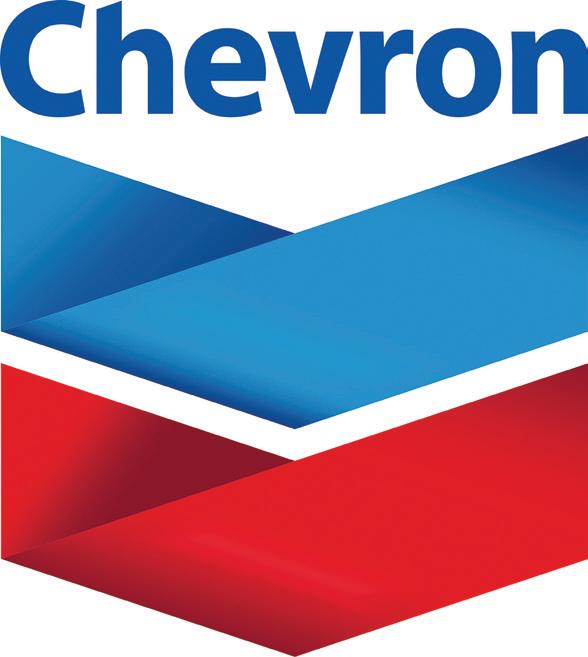



Article originally published by the National Fire Protection Association Journal Aug. 11, 2024
by Jeffrey Stull
In 2015, the Fire Protection Research Foundation (FPRF) undertook a project it coined “How Clean is Clean?” to investigate improvements for cleaning personal protective equipment (PPE, also referred to as turnout gear) to remove a variety of fireground contaminants that firefighters encounter in structural fires and other types of emergency operations.
The project was awarded to the FPRF by the U.S. Department of Homeland Security as part of the Assistance to Firefighter Research Grant (DHS AFG) program and is now in its third ongoing threeyear project to address this topic.
As we studied this problem, it became apparent that the real need was to standardize verification methods that enabled a determination of how much contamination could be effectively removed so that both existing and new techniques could be judged for their relative effectiveness.
Over the past nine years, the FPRF project team, led by Inter-
national Personnel Protection, Inc. and the National Personal Protective Technology Laboratory (a division of the National Institute for Occupational Safety and Health), has endeavored to promote better practices for how firefighters clean their gear. This is essential to reduce the secondary exposure to contaminants that continues long after leaving the emergency scene if such clothing and equipment are not adequately cleaned.
For its efforts, the project team received NFPA’s 2024 Fire Protection Research Foundation Medal, awarded annually to the













project that best exemplifies the Foundation’s mission, its commitment to addressing technical challenges, and its willingness to collaborate on project execution.
The project team realized that to promote more frequent and effective PPE cleaning, some kind of “measuring stick” was needed. The classic method of taking field-contaminated clothing and subjecting it to analysis, while seemingly pertinent, was simply not repeatable and was burdened by other limitations.
One of those limitations was the fact that the contamination was always concentrated unevenly; adjacent spots of the same PPE could have drastically different contamination levels. Another was that the only true way of discerning the presence of contamination was the destructive sampling of the gear. Even
when applied to a large number of samples, the lack of consistency for measuring contaminant removal would be inaccurate and highly variable, thus making comparisons of cleaning techniques impractical.
The project team began developing a set of procedures that eventually became known as a cleaning verification kit. In essence, the kit would include samples of firefighter protective clothing materials that were dosed with specific types of chemicals at known concentrations.
These samples would then be placed in surrogate clothing items that were then washed with “clean” ballast—extra material to properly fill the load in the washing machine—subject to whatever machine type, detergents or cleaning agents, and other pro-
cess variables were employed.
The samples were then removed and subjected to respective analyses to quantify the amount of specific chemicals that were removed.
When this data was compared to various controls, including samples that had not been washed and samples that did not have any added contaminant, it became possible to accurately represent cleaning effectiveness.
Because biological contamination, generally in the form of infectious liquids, is also a concern within the fire service, a similar process was followed with specific hardy bacteria to show how well cleaning or sanitization processes work to neutralize these types of contaminants.
The judicious choice of different chemicals, including semivolatile organic compounds as





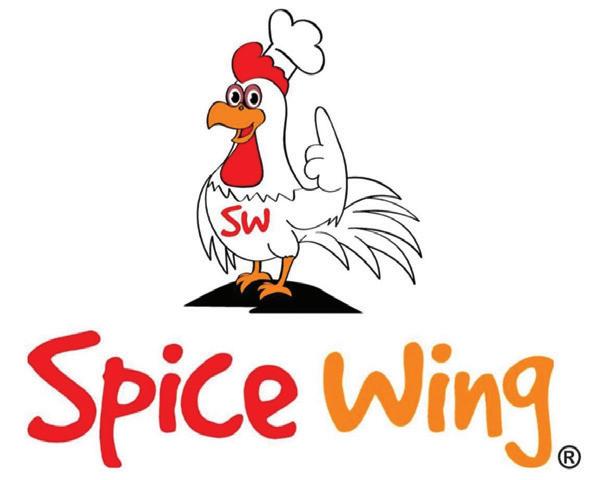







well as heavy metals, resulted in an approach that could then be used to compare cleaning at different facilities using different processes and allow metrics to gauge potential improvements in turnout clothing cleaning/decontamination effectiveness.
This process of cleaning verification has now become a mainstay of the fire service industry, both for independent service providers as well as other organizations—notably manufacturers and a few fire departments—that clean firefighter PPE and equipment.
The new “measuring stick” has resulted in ways to optimize clothing cleaning techniques, choose specific cleaning agents, and factor in other parameters that affect contamination removal from gear. This is noteworthy because on average, traditional cleaning methods remove only 50–60 percent of contaminants.
Thus, there is room to substantially improve contaminant removal efficiency. In addition, by gauging performance at individual facilities that professionally provide these services, there has been a further transfer of knowledge to individual fire departments, which often purchase equipment to develop internal capabilities for conducting their own cleaning.
Firefighter PPE has evolved tremendously from the early 1980s, when firefighters wore extra-long rubberized coats and hip-high rubber boots as their principal outfit for protection from fireground hazards. Over the ensuing decades, this outfit morphed into a complete ensemble with mod-

ern technical fabric-based garments and an assortment of other protective elements (including helmets, hoods, gloves, footwear, and breathing apparatus) boasting higher-performance designs and materials to provide fully enveloping ensembles.
As PPE provided greater levels of protection against both traditional and newer types of hazards, firefighter response capabilities also increased.
Despite these advances, the fire service has maintained a unique culture, one that is often anchored in tradition and personified by symbols that address the rigors of entering burning buildings and saving lives.
Unfortunately, one of the icons that came to characterize firefighting was the gritty, soot-laden firefighter. This image conveyed just how dirty and dangerous the
job was and symbolized a firefighter’s mettle in working within a harsh environment. Not that long ago, advertisements of protective clothing and other products indicated that the dirtier the firefighter, the more experienced and effective he or she was.
This imagery affected more than one generation of firefighters who would often avoid cleaning their PPE (or even intentionally soil it) as a projection of an active career. Reversing this perception has taken decades and did not come into vogue until the release of multiple studies corroborating that the incidence of many cancers and related health issues were associated with the profession of firefighting. Some of these studies have pointed to increased risks from the wearing of gear that was not cleaned, which would extend exposure











time to harmful contaminants. Research going back to the 1990s has shown that firefighter protective clothing becomes extensively contaminated with a vast number of different chemical and other types of contaminants. Many of these contaminants are indeed carcinogenic or pose other health hazards. Early work by the U.S. Fire Administration (USFA) demonstrated that a variety of different contaminants would often appear in turnout gear from repeated exposure to structural fires.
Though any range of specific contaminants could show up during a given fire depending on the contents and nature of that fire, many of the originally identified chemicals of concern were polycyclic aromatic hydrocarbons (PAHs). PAHs are known
persistent chemicals created by combustion processes that have been extensively associated with specific cancers and other health hazards.
These chemicals—in combination with fire decomposition products such as heavy metals, various fire retardants, and a host of other dangerous chemicals that evolve during fire conditions— have been consistently found on firefighter gear.
The USFA investigation of gear contamination further evaluated the then-common techniques for cleaning gear: using both manual methods and those employing various types of machines, with different detergents for evaluating cleaning effectiveness.
As expected, the findings from this research showed that clean-
ing performance varied where some chemicals, especially those with lower vapor pressures and less water solubility, were harder to remove and could remain at relatively high concentrations in the clothing.
Part of the fundamental research toward cleaning PPE included the investigation of the contamination process itself. There is no doubt that much of the contamination would be found on the outer shell, the exterior-most layer of the protective clothing.
However, the porous nature of textiles would still permit fire gases and very small particulates to pass through to inner layers, including the underlying moisture barrier layer that includes a film or coating that is intended to retard the penetration of hot







water and harmful liquids. Consequently, the moisture barrier can also be significantly contaminated during any fireground exposure.
Other parts of the clothing are also contaminated, even those layers that may be positioned beneath the moisture barrier, as firefighter protective clothing is not airtight. Both soot particles and gaseous forms of chemicals make their way through various openings, particularly at interfaces of the clothing with gloves, hoods, and footwear, as well as the individual closures of the clothing itself, such as zippers on the coat and pants.
This infiltration of contaminants means that all parts of the clothing can be contaminated and, therefore, cause additional exposure to firefighters when it is both handled and worn subsequent to a structural fire.
Moreover, as a carrier of contamination, wearing inadequately cleaned or unclean PPE results in the transfer of that contamination to any surface the wearer comes in contact with, including fire apparatus seats, interior areas of the fire station, the wearer, and other people when it is placed on children or other individuals as part of fire department show-andtell events.
Also contributing to the spread of contamination is the fact that soot, even though it is essentially unburned carbon particles, becomes a sponge for the gas form of various chemicals. Gases can essentially stick to the surface of soot particles, which then transfer chemicals that might otherwise evaporate after a fire.
The persistence of less-volatile chemicals along with those gas-
eous chemicals found in ultrafine particles are among the principal reasons why contaminated firefighter clothing poses increased health hazards.
Another important finding in studying turnout clothing contamination is that the contamination is not always apparent. The absence of visible contamination is not a guarantee that it does not exist, or that it may not exist at significant levels.
The fact that protective clothing has a fire or smoke odor is indicative of that contamination. This understanding became important because subjecting protective clothing to cleaning was supposed to remove fireground contaminants. Simple methods, such as rubbing a white cloth against the surface of a soiled fabric, were no guarantee that the
contamination was removed. Further, the use of detergents with fragrances would often only disguise any residual odors. Even though the wastewater from the washing machine appeared dirty and seemed to imply that the clothing was clean, washing did not always adequately demonstrate successful decontamination of the PPE.
For decades, NFPA has been an important participant in the discussions around the care and maintenance of PPE. In 2001, it published the first edition of NFPA 1851, Standard on Selection, Care, and Maintenance of Protective Ensembles for Structural Fire Fighting and Proximity Fire Fighting, designed to reduce the health and safety risks associ-











ated with improper maintenance, contamination, or damage to protective ensembles.
The standard is in the process of being consolidated with NFPA 1852, Standard on Selection, Care, and Maintenance of OpenCircuit Self-Contained Breathing Apparatus (SCBA), to create the proposed NFPA 1850, Standard on Protective Ensembles for Structural and Proximity Firefighting and Self-Contained Breathing Apparatus (SCBA), which is part of the annual 2025 revision cycle.
The research that has informed those standards has also provided a foundation for the FPRF’s “How Clean is Clean?” project. In turn, the Foundation project has identified additional questions that have shaped its ongoing work and that promise to fuel additional research initiatives going forward.
While the first DHS AFG grant focused on cleaning firefighter protective garments, there was still a substantial need to address cleaning and decontamination for other firefighter PPE items and elements. Additional efforts by the FPRF identified a number of trends and gaps in cleaning practices where attention was needed to minimize secondary contamination from unclean protective clothing and equipment.
Foremost among these were other parts of the protective ensemble that also become contaminated in fires and lead to secondary exposures, including helmets, hoods, gloves, footwear, and self-contained breathing apparatus (SCBA). Historically, these items have been cleaned by hand (which can often be ineffective) or ignored. Therefore, a
similar set of investigations were made for new ways that these ensemble elements could be more easily cleaned, which in turn has encompassed developing techniques for measuring how well these advanced cleaning methods remove contaminants.
Owing to an assortment of factors—including unique geometries, the range of materials used, and a broader range of less consistent cleaning practices employed—the techniques for applying contaminants to products and measuring their removal became somewhat more challenging for PPE such as helmets, SCBA, and footwear.
Nevertheless, the project team is testing several approaches with which these protective elements can be cleaned to determine which procedures are more efficient. This is important because some of the fundamental research undertaken by the FPRF has also shown that certain PPE elements tend to become more contaminated than others and are subject to different cleaning removal rates.
Some of these findings may be considered counterintuitive. Not unexpectedly, gloves pick up extensive contamination on the fireground and become a prominent conduit for transferring contamination to individuals and equipment.
But significant contamination can also occur in PPE areas where it would be less anticipated, such as the helmet suspension materials and the inner layer of the protective hood, which is in direct contact with a firefighter’s skin.
When these items are subjected to conventional cleaning methods, the results have been
mixed. In some cases, high rates of contamination removal are achieved, but in others, including helmet suspension, cleaning efficiencies have been poor.
These findings warrant a reexamination of cleaning priorities that address where contamination is most likely to be found and create potential contact with wearers. However, they also illustrate that perhaps better cleaning alone may not be the solution.
The differences between contamination pick-up on the different parts of the ensemble and the disparate decontamination potential for these highly contaminated areas also point to the need to design PPE elements to mitigate acquired and retained contamination, such as removable, more easily cleaned helmet suspensions.
Developing metrics for cleaning all parts of the firefighting ensemble is important because it establishes the baseline cleaning performance for existing techniques, which can then be compared to new technology or procedures that can be implemented for improved contamination removal.
As such, for both garments as well as other elements of the firefighting ensemble, the advancement of new machine technology, such as novel forms of carbon dioxide dry-cleaning (as well as specific pretreatment techniques, unique cleaning agents, and other process aids), will apply these metrics for cleaning effectiveness as the basis for making defensible claims based on standard methodology.
Supplemental investigations into difficult contamination issues have informed the fire service

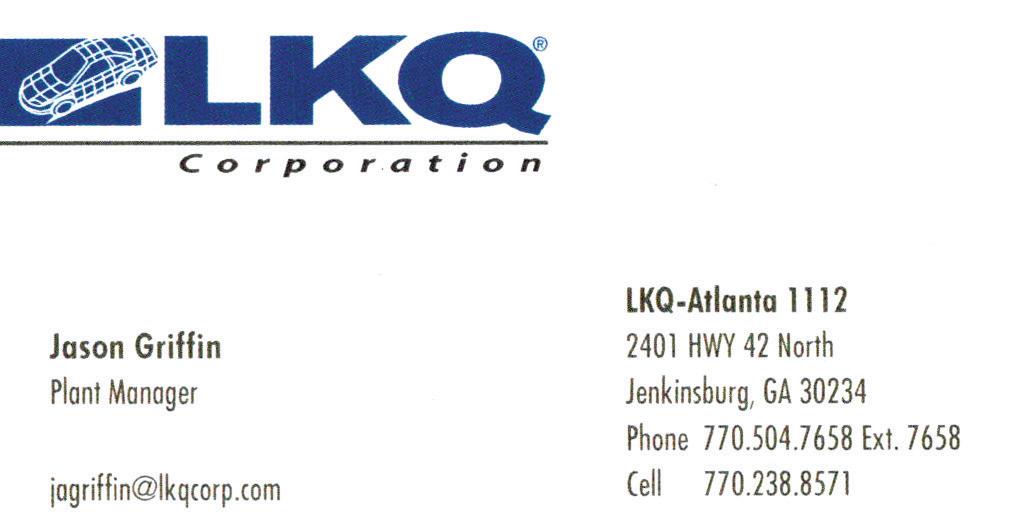








of unique exposures that may require specialized cleaning.
The FPRF project has investigated several types of contamination often encountered by fire departments that require different approaches for cleaning and decontamination. For example, asbestos is still found in structures and creates extensive exposure claims if it is found on clothing.
Firefighters also routinely encounter hazardous chemicals, in both bulk form and as decomposition products, that create distinctively problematic decontamination hazards.
An emerging issue that may require further research is determining cleaning effectiveness following lithium-ion battery fires when such exposures occur. Thus, the research efforts for this project are collectively attempting to address the development of fire
service best practices for cleaning and decontamination to handle a range of exposure circumstances.
Firefighting and other emergency response activities already constitute an ultra-hazardous occupation, one where individuals are exposed to a large variety of threats, including many acute hazards; the International Agency for Research on Cancer has concluded that occupational exposure as a firefighter is carcinogenic to humans. The PPE itself should not become a source of additional hazards.
Due to the past and ongoing work of the FPRF and many other organizations, a change in the fire service culture with respect to wearing clean PPE is starting to take hold. By ensuring that secondary exposure can be further minimized, it is hoped that this work will reduce the likeli-
hood that firefighters will face additional hazardous substance exposures from their PPE.
Key outputs to the success of this effort include developing a cleaning validation kit, establishing standardized metrics for cleaning efficiency for various exposure types, evaluating methods for firefighting PPE elements beyond coats and pants, and providing methodologies to assess detergents and cleaning methods for PPE cleaning efficiency.
The impact of this work on the fire service will be felt for generations to come.

San Andres Mexican Grill
600 Pavillion Pkwy, Monroe (678) 365-3767


2331 Varkel Way, Lithonia (678) 336-7090 Bali

505 W. Union Street, Vienna (229) 268-6494


17 Monroe Hwy Winder (770) 307-4495



2735 Lee Rd, Lithia Springs (770) 577-6618







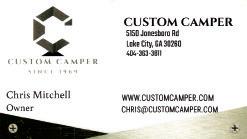













Original article published by the National Fire Protection Assocation Journal
by Jesse Roman
When designing complex novel buildings such as a modern airport or a mall with a large atrium, fire protection engineers have long relied on computational fluid dynamics (CFD) simulations to predict how fire and smoke will spread through the structure.
Such tests are necessary for designing fire protection strategies for projects relying on performance-based design, where the parameters of the building fall outside the scope and guidance of traditional codes and standards.
The problem, experts say, is that these large CFD simulations are time-consuming, costly, and
take a lot of computational time, making it difficult for a reviewer to check several different designs for optimal performance.
To solve that problem, artificial intelligence researchers are developing new systems run by a trained AI program that can do the same calculations and modelling in a fraction of the time.
What’s more, instead of relying on a static model in the manner of traditional simulations, the AI system is able to learn from the experiences and data generated from each new test, thereby improving its accuracy over time.
Once the models are trained, an engineer would only need to input parameters such as building dimensions, fire size, and fuel type, and will get results almost instantly.
Several AI-related projects in the works aim to use AI to make it easier to design better fire protection systems for buildings.
For instance, one AI program is being developed to instantly calculate the ceiling heights and slopes in an entire building and estimate the optimal location for each sprinkler and smoke detector to maximize effectiveness in the event of a fire.
Another AI program under consideration is akin to a toolbox for sprinkler design; by training it on various codes and standards, the program may soon be capable of telling a sprinkler designer where exactly in a building to place each sprinkler to achieve compliance and optimal performance.







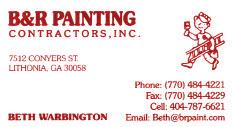



Still another project, initiated by the Fire Protection Research Foundation, has trained AI cameras to go through a building and use visual data to identify various objects and calculate the total fuel load of the building and its contents.
Such measurements are critical in performance-based designs for ensuring adequate fire protection. In one early test, the AI surveyed three office buildings and found that “the measured total fuel load densities…were considerably larger than values found in older surveys and most code provisions,” according to the project’s final report.
Future variations of the tool may soon be used to improve fuel load requirements in NFPA 557, Standard for Determination of Fire Loads for Use in Structural
Using a combination of sensors and AI, some experts envision fire departments someday leading a fire response remotely using what’s called a digital twin: a toscale and real-time digital representation of a building, tunnel, or other structure on fire.
In a fire scenario, fire commanders could create a digital twin of a fire on a computer screen to see the real-time outline of the fire’s exact location as it grows and spreads throughout a building.
This might include dots representing the location of real firefighters or firefighting robots as they work to extinguish the fire. Overlayed on the screen would be anything deemed useful—the status and location of sprinklers or fire pumps, exit locations,
temperature readings, air speed and direction, the movement of pedestrians, or even predictive analysis of how conditions might change from minute to minute.
Fire commanders could control aspects of the response, such as smoke ventilation, by clicking a button and opening a ceiling window inside the structure. Such technology would require many more sensors, smart building technologies, and real-time data transfer, experts say, and may still be years away.
Even so, digital twins are already finding applications including manufacturing production lines, where a worker at a computer can run the line like the video game Sim City, pointing and clicking to tell the machines what to do and even changing real-world variables simply by
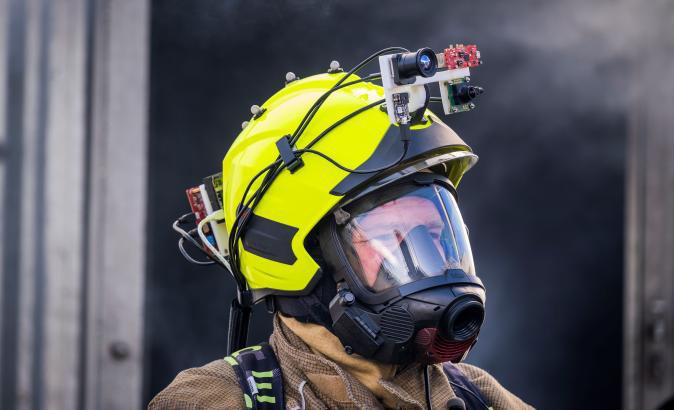





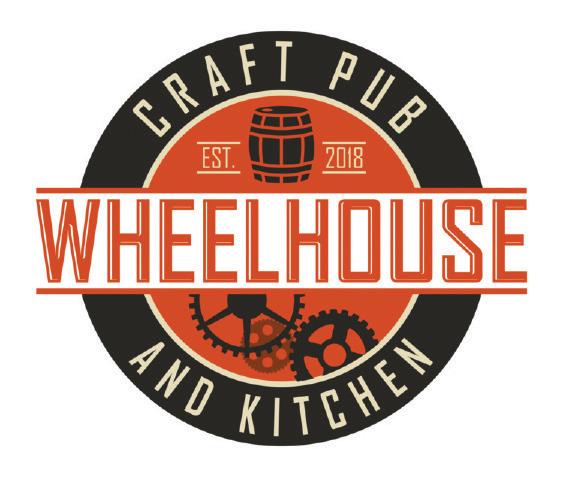




manipulating them on the screen.
Existing novel methods for smart evacuation and crowd management could soon get a boost from faster AI programs.
Dynamic exit signs direct occupants to the optimal and safest route of egress in the event of a fire or other emergency, depending on the specific conditions inside the building.
For such a system to work, a huge amount of data from sensors must be processed in real time to understand where in a building smoke and heat exist—and critically, where they are moving— and then coordinate potentially hundreds of different exit signs throughout the building to display the correct egress information.
As conditions change, so might
the optimal path of exit. The realization of such complex exit strategies will almost certainly depend on AI and machine learning systems to process the information and then predict how the hazards will change over time.
Crowd management tools are also expected to get a big boost from AI. Basic tools already exist that can process information from security cameras, sensors, cell phone data, and even social media to evaluate crowd count in a given area and create density maps.
Layering powerful AI algorithms over these programs could help officials at major events analyze crowd movement patterns faster to proactively manage the flow of people and avoid potentially hazardous situations. This system, used in conjunction
with tools including dynamic signage, may one day automatically detect bottlenecks and other hazards at large events and use signage to steer people to prevent overcrowding.



























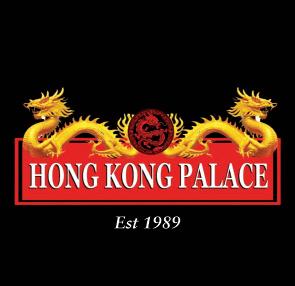






Article originally published by FireRescue1 Oct. 30, 2024
by Jason Poremba
Editor’s note: The science of firefighting and flow path management has consumed much of our educational discussions for the past 10 years or so. This article, originally published in 2009, is a good reminder to not lose focus on the dangers of flashover, which of course can be managed somewhat through good flow path management.
Firefighters are all taught about the dangers of flashovers in fires and the limited time they have to get themselves to safety.
Flashovers are a rapid event involving a significant increase in fire growth and development.
Typically this is a change from a fire located at a specific source, or “fuel package,” to a fire that takes over every other combustible object of the compartment involved without actual flame contact. The heat transfer at and beyond flashover is primarily by radiation.
To understand how to get out of a flashover, we must first understand what a flashover is. NFPA 921 defines flashover as, Flashover factors
So what are the factors involved in a flashover? Here are some, compiled from various sources:
• Location of fire
• Size of compartment
• Shape, area and volume of the compartment
• Heat gain and heat loss
• Contents and their relative surfaces, materials, etc.
• Ambient temperature at the beginning of the fire
• Location and height of doors, windows and openings
• Fire growth rate
In reading “Flashover and Fire Analysis” by Patrick and Kathryn Kennedy, we also learn that just because a fire leads to full-room involvement, it does not always mean the room flashed over.
Reports point out that ventilation is one of the most significant factors in whether flashover ever occurs, with Vincent Dunn describing it as one of his three recommended ways to delay such an event.
The Kennedys also state: “The indicators of flashover do not define flashover. Rather flashover is defined by its nature (rapid transition to a full room involvement.”












Another misconception among fire investigators is the rate of speed for a flashover. Kennedy points out that investigators make subjective decisions based on the rate of “full room involvement” and often deem a fire to have been started with some form of accelerant.
In fact, NFPA 921 states the contrary, saying, “Research has shown that time to flashover from open flame can be as short as 1 1/2 minutes in a residential fire.”
Here are some reported first-hand observations on indications flashover occurred from “Flashover and Fire Analysis.”
• Witnesses commonly report fire “exploded”
• Rapid flame extension that moves laterally through compartment
• Breaking of external windows
• Flames extend beyond compartment to adjacent compartments
• Full room involvement
By proper ventilation, we can eliminate superheated air and gases from the compartment. Depending on the fire, you can call for a horizontal or vertical vent. Just be conscious of the venting and location of the vent to not get other portions of the uninvolved structure involved.
This method also reduces heat in the compartment as well as increases visibility for potential search operations. Vincent Dunn mentions in his report that nonventilation is also another option: “By not venting and instead clos-
ing the door to the burning room, you can also delay flashover.”
He adds: “By not venting, you starve the fire of oxygen, which slows down the combustion rate, which slows down the build-up of heat in the room. This may be done when there is a delay in stretching a hose line and all persons are out of the burning room.”
If ventilation is not immediately possible, or a hoseline is not in place, you can also consider a portable extinguisher to cool down the heat in the burning compartment to delay the potential flashover. The odds of escaping a flashover alive are slim, and escaping a flashover without injury is even rarer.
Knowing the warning signs is key in giving you the signal to get out immediately. Multiple sources average your time for a flashover to be from 7-10 seconds.
So the best-case scenario is you have 10 seconds to react and get to safety. This is usually about 5' of distance for the average firefighter.
The most common signs of
a flashover are high heat and rollover. The heat will be extreme so be on the alert for a severe and sudden change in temperature. This heat will be so intense it will be felt through your gear.
Rollover is often confused with flashover. Rollover is usually observed by flames “rolling” or “dancing” across the ceiling. Rollover is the ignition of gases present in the room, not contents.
As stressed in previous articles, full PPE is key, but not always a live-saver. Temperatures during a flashover often exceed the PPE limitations. Also try to always consider alternate egress points or areas of potential refuge which could include doors, windows or adjacent rooms. Be proactive, read the smoke, study the fire and if you see something report it.
Do not perform PPV until a charged hoseline is in place. The key for me is that we need to put more emphasis on staying out of trouble in the first place, and less on the last few seconds we have to save our life.

We are pleased to offer our readers this easy reference guide to additional businesses. We urge you to patronize these advertisers, as well as those who have purchased display space in this magazine.
2 CARNALES
136 WILLOW LANE
678-272-0560…MCDONOUGH
4 WAY STOP
495 FRONTAGE ROAD 478-290-6654…SYLVANIA
24 HOUR TIRE COMPANY
940 HWY 155 S 678-759-1715…MCDONOUGH
76 FOOD MART
338 HWY 138 6778-479-5745…RIVERDALE
8848 FOOD MARKET
6736 TARA BLVD 404-889-2720…JONESBORO
A1 BEAUTY AND BEYOND 121 COMMERCE AVENUE
706-443-5497…LAGRANGE
A-1 BEAUTY SUPPLY
116 N. MAIN STREET 912-564-7602…SYLVANIA
A TO Z GROCERY STORE
4480 WINTERS CHAPEL ROAD
770-559-4449…ATLANTA
AA IDEAL NEW & USED APPLIANCES
4158 OLD DIXIE ROAD
404-361-4445…HAPEVILLE
A PLUS CLEANERS
207 E FELTON, STE 102 770-606-9772…CARTERSVILLE
A-TOWN WINGS
2600 N COLUMBIA STREET 478-295-0585…MILLEDGEVILLE
K ALTERATIONS
5582 CHAMBLEE DUNWWODY ROAD 770-391-1033…DUNWOODY
ACE HARDWARE
203 W. BRAZELL STREET 912-557-6785…REIDSVILLE
ALL PRO COLLISION
3588 OAKCLIFF ROAD 770-416-9660…DORAVILLE
ALMOND EXPRESS
2625 DEANS BRIDGE ROAD
706-790-4775…AUGUSTA
ANNA’S MEXICAN BAR & GRILL 790 EUHARLEE ROAD, STE 325G 770-387-0406…EUHARLEE
ALOHA DENTAL CARE
4849 BUFORD HWY
770-216-8377…ATLANTA
AMERIBISTRO
6459 HWY 42 770-507-9292…REX
AMERICA’S FOOD BASKET
4769 JONESBORO ROAD
404-361-3335…FOREST PARK
AMERICAN DELI 5856 JONESBORO ROAD
770-960-7525…MORROW
AMOCO FOOD MART 5635 HWY 42 678-935-8321…ELLENWOOD
AMOCO FOOD MART
199 UPPER RIVERDALE ROAD
678-471-3788…JONESBORO
AMOCO FOOD MART 6333 HWY 42 404-707-6263…REX
AMPM CONVENIENCE STORES
110 HARLEM GROVETOWN ROAD
706-305-9180…GROVETOWN
ANGIE’S BEAUTY SUPPLY 2300 LAKE HARBIN ROAD
404-608-0780…MORROW
AROMA SAUNA
308 W 8TH STREET, STE 103
706-643-0343…WEST POINT
AUSTELL FOOD MART
5565 AUSTELL POWDER SPRINGS ROAD
770-948-5022…AUSTELL
AUTO PRECISSION VARGAS SERVICE
4091 MORELAND AVENUE
404-246-6322…CONLE AUTO SERVICES 2180 LOVEJOY ROAD
678-545-4722…HAMPTONY
AUTO SERVICE CENTER
6855 PEACHTREE INDUSTRIAL BLVD 770-441-1662…ATLANTA
AUTO QUICK
1019 MT. ZION ROAD
678-272-6830…MORROW
B&B TRUCK REPAIR
4570 MORELAND AVENUE
678-449-6682…CONLEY
BN AUTO REPAIR
376 HWY 155 SOUTH 770-504-3088…MCDONOUGH
BP FOOD MART
6125 OLD DIXIE HWY
678-489-5436…FOREST PARK
BP FOOD MART
7278 FIELDER 770-549-5253…JONESBORO
BP FOOD MART
420 FAIRVIEW ROAD 470-781-5267…STOCKBRIDGE
BANZAI JAPANESE STEAKHOUSE 1510 LAFAYETTE PKWY 706-882-0750…LAGRANGE
BEAUTY TOWN 6459 HWY 42 678-663-5862…REX
BEAUTY WORLD 830 PIO NONO AVENUE 478-741-4777…MACON
BIG JULIO’S TIENDA MEXICANA 108 N.W. BROAD STREET 912-526-9999…LYONS
BIG TIME BEVERAGE 20 APEX DRIVE 770-334-2211…CARTERSVILLE
BLACK RIVER SALES & SERVICE 242 GREENVILLE STREET 770-252-7955…NEWNAN
BLOSSOM BEAUTY SUPPLY 5627 N. HENRY BLVD 678-634-7939…STOCKBRIDGE
BRITO SUPERMARKET 3020 BUFORD HWY 404-633-5005…ATLANTA
BROOKHAVEN LAUNDRY 2987 BUFORD HWY 404-992-9988…ATLANTA
BROWN’S AUTOMOTIVE 649 GA 212 478-968-0078…MILLEDGEVILLE
BROWN & BROWN WRECKER SERVICE 3854 N. PEACHTREE ROAD 770-457-2226…CHAMBLEE
BUDGET INN OF LAGRANGE 100 HILL STREET 706-882-3595…LAGRANGE
BURNT HICKORY GROCERY 1160 BURNT HICKORY ROAD 770-334-8513…CARTERSVILLE
CAFE ST 777 4571 JONESBORO ROAD 404-538-4848…FOREST PARK
CAMDEN INN & SUITES 720 S LEE ST 912-510-7604…KINGNSLAND
CARIBBEAN ROTI SHOP 140 WILLOW LANE 470-662-1263…MCDONOUGH
CARNICERIA GARCIA #2 5627 N HENRY BLVD 678-565-3477…STOCKBRIDGE
CARNICERIA ZACATECAS 2962 CLEVELAND HWY
706-529-2857…DALTON
CASA BLANCA RESTAURANT 6821 PEACHTREE INDUSTRIAL BLVD 678-205-0700…DORAVILLE
CERRITO WESTERN WEAR 4140 JONESBORO ROAD 404-363-9790…FOREST PARK
CERTIFIED AUTO REPAIR 4210 JONESBORO ROAD 404-361-6101…FOREST PARK
CHALO 620 GA HWY 155 S 678-664-9195…MCDONOUGH
CHENG’S GARDEN 1861 ROANOKE ROAD 706-812-8090…LAGRANGE
CHEQUE EXPRESS 4939 WINTERS CHAPEL ROAD 470-709-5821…ATLANTA
CHEVRON (GAS & FOOD MART) 1724 MORRISON MOORE PKWY 706-867-0806…DAHLONEGA
CHEVRON FOOD MART 5465 CHAMBLEE DUNWOODY ROAD 470-545-3886…DUNWOODY
CHEVRON FOOD MART 5195 HWY 42 404-608-9059…ELLENWOOD
CHEVRON FOOD MART 738 MORROW ROAD 404-366-0202…FOREST PARK
CHEVRON FOOD MART 7264 TARA BLVD 470-659-9484…JONESBORO
CHEVRON FOOD MART 6714 TARA BLVD 678-545-6176…JONESBORO
CHEVRON FOOD MART 2355 MT. ZION PKWY 855-285-9595…JONESBORO
CHEVRON FOOD MART 8545 TARA BLVD 929-508-5763…JONESBORO
CHEVRON FOOD MART 4126 HWY 42 S 770-957-3150…LOCUST GROVE
CHEVRON 1389 PIO NONO AVENUE 478-743-8980…MACON
CHEVRON 4719 NORTHSIDE DRIVE 478-238-6561…MACON
CHEVRON FOOD MART
2297 HWY 20 EAST
404-519-7687…MCDONOUGH
CHEVRON FOOD MART
5051 HWY 155 N 855-285-9595…STOCKBRIDGE
CHEVRON FOOD MART
3905 LAVISTA ROAD
770-559-1193…TUCKER
CHINA CAFÉ
1481 HUDSON BRIDGE ROAD, STE I 770-389-9688…STOCKBRIDG
CHINA EXPRESS
109 WILLOW LANE
770-848-1933…MCDONOUGH
CHINA EXPRESS 31 HWY 138 470-878-0929…STOCKBRIDGE
CHINA KITCHEN 11179 TARA BLVD 770-6038005…HAMPTON
CHINA KITCHEN 90-H GLENDA TRACE 770-251-8555…NEWNAN
CHINA ONE CHINESE RESTAURANT
109 VILLAGE AT GLYNNS PLACE 912-267-7388…BRUNSWICK
CHINA WOK
1601 HWY 40 EAST
912-510-6490…KINGSLAND
CHOICE CLEANERS
2642 LOCUST GROVE
678-432-1758…LOCUST GROVE
CITGO
1133 S WALL STREET
706-629-4100…CALHOUN
CITGO FOOD MART
103 COMMERCE AVENUE
706-885-9215…LAGRANGE
CITGO
619 FAIRGROUND GATEWAY 770-428-6154…MARIETTA
CITGO
193 MONTGOMERY STREET 770-318-7370…VILLA RICA
CITGO FOOD MART
5428 OLD DIXIE HWY 404-748-1715…FOREST PARK
CLOTHING CARE CLEANERS 2211 SAVOY ROAD 770-458-7878…CHAMBLEE
COLLINS MOBILE HOME SUPPLY PO BOX 326
912-557-4925…REIDSVILLE
COUNTRY CORNER
693 N 1ST STREET
912-530-6110…JESUP
CRAVINGS HOME COOKING 2180 HWY 20 WEST
678-432-4888…MCDONOUGH
CUPID NAILS SPA
11386 TARA BLVD
678-519-5712…HAMPTON
CUTE NAILS
1065 HWY 155 S
770-288-2082…MCDOOUGH
DM BRAKES AUTO SHOP
2300 DRESDEN DRIVE
770-256-9770…ATLANTA
DASH FOOD MART
3900 NEWCASTLE STREET
912-267-9632…BRUNSWICK
DAVINCI’S PIZZA
1035 GA 155 S 678-432-0712…MCDONOUGH
DAY CARE
5366 JONESBORO ROAD
404-664-6968…LAKE CITY
DEAL VETERINARY CLINIC 900 N. VETERANS BLVD 912-654-0404…GLENNVILLE
DELRAY FARMS
2518 E WALNUT AVENUE
706-217-2581…DALTON
DEMETRIO’S AUTO REPAIR & TIRES 4140 JONESBORO ROAD
404-855-5744…FOREST PARK
DESTINY FOO DMART
415 HARTWELL STREET
404-992-0262…ROYSTON
DISCOVER TERIYAKI & WINGS
4496 JONESBORO ROAD
404-254-4288…FOREST PARK
DOLLAR CAFÉ
1189 SOUTH LAKE CIRCLE
770-968-0111…MORROW
DOOR RESOURCES
5025 COURTNEY DRIVE
404-361-8360…FOREST PARK
DOUBLE BRIDGE 1214 HWY 145
706-245-7906…ROYSTON
DOUGLASVILLE FOOD MART
3385 FAIRBURN ROAD
678-503-2033…DOUGLASVILLE
DUDLEY’S FOOD & SPIRITS 6691 MILLWOOD LANE 770-484-4164…LITHONIA
DURANGO AUTO REPAIR
7480 TARA BLVD
678-216-0442…JONESBORO
EL ALAZAN MEXICAN RESTAURANT
3851 EVANS TO LOCK ROAD
706-922-9760…MARTINEZ
EL CHARRO NEWNAN INC. 77 BULLSBORO DRIVE 678-423-7273…NEWNAN
EL CHEAPO
6495 JESUP HWY 912-261-2026…BRUNSWICK
EL CHEAPO #76
250 W. GENERAL SCREVEN WAY 912-368-0093…HINESVILLE
EL DIAMANTE JEWELRY
3406 CLAIRMONT ROAD 770-451-4638…BROOKHAVEN
EL MERCADO
6806 PEACHTREE INDUSTRIAL BLVD 470-636-4601…ATLANTA
EL SEMENTAL WESTERN WEAR
6570 TARA BLVD 678-510-3729…JONESBORO
EAGLES LANDING BOTTLE SHOP 100 EAGLES LANDING PKWY 770-507-5093…STOCKBRIDGE
ECONO FOOD MART
10 WARES CROSS ROAD 706-756-7455…LAGRANGE
ECONOMY MOTEL 501 S LEE STREET 912-576-8811…KINGSLAND
EDDIE’S 2 GO 4457 WALT STEPHENS ROAD 770-507-2897…STOCKBRIDGE
EQUILIBRIUM OYA 4939 WINTERS CHAPEL ROAD 404-454-6744…ATLANTA EXXON
226 N. MAIN STREET 770-478-6148…JONESBORO
EXXON FOOD MART 7297 TARA BLVD 470-726-4012…JONESBORO
EXXON FOOD MART 6455 HWY 85 201-658-8290…RIVERDALE
EXXON MOBILE
249 N. MAIN STREET 571-338-7897…JONESBORO
FAIRGROUND FOOD MART 619 FAIRGROUND STREET 770-428-6154…MARIETTA
FAMILY GROCERY STORE 524 S. GREENWOOD STREET 706-518-0170…LAGRANGE
FAST BREAK 200 STATE STREET 912-526-8066…LYONS
FAST FILL FOOD MART 3080 HWY 52 A 706-507-1130…CHATSWORTH
FAST STOP 316 N VETERANS BLVD 912-654-9291…GLENNVILLE
FAST LANE FOOD MART 685 BATTLECREEK ROAD 706-477-1372…JONESBORO
FLAVORS OF THAI CUISINE 1395 SOUTHLAKE PARKWAY, STE J 678-884-5099…MORROW
FLETCHER & SONS AUTO CARE 101 BURKE STREET 770-389-4901…STOCKBRIDGE
FLINT RIVER GROCERY 2450 PINE STREET 478-627-9608…UNADILLA
FOOD BASKET 793 ALLGOOD ROAD 770-422-7703…MARIETTA
FOOD MART
2800 NORTHEAST EXPWY 404-502-5440…ATLANTA
FRONTERA IMPORTS
143 LAKE MIRROR ROAD
404-361-3355…FOREST PARK
GA C&C CLINIC 5677 BUFORD HWY 678-547-1045…DORAVILLE
GEORGIA FINE FOODS 4161 JONESBORO ROAD 404-366-6330…FOREST PARK
GEORGE’S LIQUOR STORE 2401 ½ PLANT AFENUE 912-283-1124…WAYCROSS
GLAMOUR NAILS 246 S. MAIN STREET 912-567-6520…REIDSVILLE
GLENNVILLE AUTO PARTS 324 N. VETERANS BLVD 912-654-2111…GLENNVILLE
GOLDEN WOK EXPRESS 1125 HWY 155 S 678-7825885…MCDONOUGH
GOOD WHEELS CERTIFIED AUTO REPAIR
181 MAIN STREET 678-545-4239…JONESBORO
GRAND WINGS 55232 JONESBORO ROAD 404-968-3300…LAKE CITY
GREAT CHINA 7565 HWY 85 770-991-6789…RIVERDALE
GREAT CHOW 1302 MT. ZION ROAD 678-422-1666…MORROW
GREAT STYLES 826 MORROW STREET 404-366-6665…FOREST PARK
GREAT WALL 10189 S. PIERCE STREET 912-632-1188…ALMA
GREAT WALL 2262 LAKE HARBIN ROAD 404-361-2288…MORROW-
GREAT WALL 246 S. MAIN STREET 912-557-8897…REIDSVILLE
GROVE GUN SHOP 201 TANGER BLVD 678-814-4831…LOCUST GROVE
GUACAMOLE 697 DAVIS ROAD 678-782-3799…STOCKBRIDGE
H&W ENT INC 5470 BUFORD HWY 470-406-9051…DORAVILLE
H&Y FOOD MART 1401 ROCK CUT ROAD 404-366-4006…FOREST PARK
HGO AUTO REPAIR 7637 JONESBORO ROAD 678-458-1489…JONESBORO
HAHN’S ALTERATIONS 5128-A NORTH HENRY BLVD 770-507-6948…STOCKBRIDGE
HAPPY STOP FOOD MART
622 ALLEN STREET
770-994-1919…RIVERDALE
HARPER’S GENERAL STORE
1710 LAFAYETTE ROAD
706-673-3302…ROCKY FACE
HONDUMEX RESTAURANT
5863 OLD DIXIE HWY
404-931-6100…FOREST PARK
HONG KONG EXPRESS
614 HWY 155
678-272-7007…MCDONOUGH
HOP IN TEXACO
5991 OLD DIXIE HWY
470-428-3640…FOREST PARK
HOT CAFÉ
5286 RIVERDALE ROAD
770-996-6544…ATLANTA
HOT WOK
3894 DUE WEST ROAD
770-218-0504…MARIETTA
HWY 42 PACKAGE STORE
2650 HWY 42 S 770-320-8288…LOCUST GROVE
HWY 80 SHELL
1024 HWY 80
912-748-9363…POOLER
J’S AUTO BODY SHOP
4816 OLD DIXIE HWY
678-237-9109…FOREST PARK
JJ FISH & CHICKEN
900 HWY 138
678-489-6366…STOCKBRIDGE
JP LOVEJOY
11469 E LOVEJOY ROAD
203-583-5447…HAMPTON
JAY FOOD MART
101 KYLE SORRELL ROAD
912-587-2905…STATESBORO
JODECO FOOD MART
3656 JODECO ROAD
770-957-0952…MCDONOUGH
JOHNSON TIRE CO.
1104 N. TENNESSEE STREET
770-386-4107…CARTERSVILLE
JUDY’S HAIR SALON
4185 JONESBORO ROAD
678-343-1506…FOREST PARK
JUNIOR FOOD STORE
516 DALLAS HWY
770-459-3552…VILLA RICA
K&B GROCERY
660 ROBERTS DRIVE
678-829-3965…RIVERDALE
KALGIDHAR ENTERPRISES
7184 ROCKBRIDGE ROAD
678-218-2480…STONE MOUNTAIN
KALPESH KUMAR PATEL
104 TOBEE DRIVE
478-321-5602…LIZELLA
KANKU EXP 105
601 LAFAYETTE ROAD
706-519-9431…ROCKY FACE
KARAN KUMAR PRAJAPAD
218 LITTLE HICKORY DRIVE
929-641-5842…LIZELLA
KIM TUOI
6163 REYNOLDS ROAD
770-961-7603…MORROW
KING FOOD MART
2177 BROAD STREET
706-738-4125…AUGUSTA
KING OF SMOKE 1835 N COLUMBIA
478-395-1511…MILLEDGEVILLE
KIRO TRANSMISSON 4584 MORELAND AVENUE
404-964-6680…CONLEY
KOREAN BAR B Q 1105 HWY 80 E 912-988-3379…POOLER
KORNER STORE 155 EAST ATLANTA ROAD 770-474-3982…STOCKBRIDGE
KRAZY AUTO WORKS 3828 STEWART AVENUE
678-872-8232…DORAVILLE
LA ALEGRIA 977 FOREST PARKWAY 404-228-3356…FOREST PARK
LA CENTRAL 1529 AUSTELL ROAD
678-354-8679…MARIETTA
LA CONSENTIDA 4140 JONESBORO ROAD
404-226-7445…FOREST PARK
LA DE MICHOACAN 4160 JONESBORO ROAD 404-361-0131…FOREST PARK
LA FAVORITA LATIN GROCERY 1550 DEAN FOREST DRIVE 912-349-3468…GARDEN CITY
LA FIESTA FOOD MART
6829 PEACHTREE INDUSTRIAL BLVD 999-999-9999…ATLANTA
LA GUANAJUATO TIENDA MEXICANA 321 US 80 912-748-9114…POOLER
LA LATINA 2004 E MORRIS 706-259-7893…DALTON
LA MORENA 116 WILLOW LANE 770-288-2851…MCDONOUGH
L.A. NAIL TOO 307 VENTURE DRIVE 912-280-0971…BRUNSWICK
LA NAILS
7195-H HWY 85 770-996-5670…RIVERDALE
LA PATRONA
2714 SHALLOWFORD ROAD 770-451-2776…ATLANTA
LAL’S 1220 MONTGOMERY STREET 9120335-1596…SAVANNAH
LC NAILS & SPA
1067 FRANKLIN STREET 706-246-0009…ROYSTONE
LATIN FOOD MART 3394 BUFORD HWY 404-789-8674…ATLANTA
LATINO AUTO SALES 4650 JIMMY CARTER BLVD 678-580-2537…NORCROSS
LATINO FOOD MART 3645 SHALLOWFORD ROAD 404-759-5117…DORAVILLE
LE NAILS 959 1ST STREET 912-271-7254…JESUP
LEE MARKET 5459 RIVERDALE ROAD 678-509-0996…COLLEGE PARK
LOCUST GROVE BP 485 BILL GARDNER PKWY 678-583-9750…LOCUST GROVE
LUCKIE NAILS 753 COOK STREET 706-246-0075…ROYSTON
LUCKY’S CAR AUDIO 5620 OLD DIXIE HWY 678-201-7447.FOREST PARK
LUKE’S DISCOUNT 1215 S. 1ST STREET 912-559-2491…JESUP
MT ZION FOOD MART 6720 MT ZION BLVD 678-271-2443…MORROW
MAI THAI RESTAURANT 4272 WASHINGTON ROAD 706-210-9008…EVANS
MALL PARKWAY FOOD MART 7655 MALL PKWY 678-698-2758…STONECREST
MALIK FOOD MART 1153 BURNT HICKORY ROAD 678-557-3843…CARTERSVILLE
MANOLO’S TAQUERIA 5955 ASH STREET 470-693-5938…FOREST PARK MARATHON 217 RIVERSTONE PKWY 678-880-6146…CANTON
MARATHON FOOD MART 2130 HWY 20 WEST 678-583-0020…MCDONOUGH
MARATHON SKIDAWAY 2511 SKIDAWAY ROAD 912-447-6773…SAVANNAH
MASALA COTTAGE 931 HWY 155 S 678-782-5129…MCDONOUGH
MERCADO DE ABASTOS 3307 BUOFRD HWY 404-600-2467…BROOKHAVEN
MICHOACAN TAQUERIA 3328 BUFORD HWY 404-321-0600…BROOKHAVEN
MILA SALON DE BELLEZA 5680 OLD DIXIE HWY
404-549-8574…FOREST PARK
MING’S RESTAURANT 4650 FORSYTH ROAD 478-405-7885…MACON
MINIT STOP 1875 RAYNIER ROAD 912-385-2027…JESUP
MONTERREY MEXICAN RESTAURANT 3865 LAVISTA ROAD 770-493-3565…TUCKER
MONTEZUMA WELDING 236 SPAULDING ROAD 478-472-8186…MONTEZUMA
MOSS PAWN 6382 OLD DIXIE HWY 770-968-4949…JONESBORO
MOTEL 6 688 HWY 155 S 770-957-5858…MCDONOUGH
MOTEL SIX 1016 HWY 80 912-748-5242…POOLER
MOTEL 6 619 HWY 138 W 679-519-2151…STOCKBRIDGE
MUCHO MEAT MARKET 4460 JONESBORO ROAD 404-363-4907…FOREST PARK
MUNDO LATINA 3245 CHAMBLEE DUNWOODY ROAD 770-452-4444…CHAMBLEE
MY NAILS & SPA 2601 N. COLUMBIA STREET 478-452-0268…MILLEDGEVILLE
NAIL STUDIO 632 EAGLES LANDING PKWY 678-762-5144…STOCKBRIDGE
NAM PHUONG 4051 BUFORD HWY 404-633-2400…ATLANTA
NEIGHBOR’S FOOD MART 412 MARTIN LUTHER KING JR DRIVE 478-825-8865…FORT VALLEY
NEIGHBORS MARKET 5669 HWY 42 770-960-6711…REX
NEW ALTERATIONS 2482 JETT FERRY ROAD 770-394-1080…DUNWOODY
NEW CITY BUFFET 7165 HWY 85 770-539-5988…RIVERDALE
NHC FOOD CO 5182 OLD DIXIE HWY 404-784-8938…FOREST PARK
NORTHSIDE BEVERAGE 332 N. MAIN STREET 478-237-9714…SWAINSBORO
OAK PLAZA INN 532 GORDON STREET 912-449-6654…BLACKSHEAR
ORIGINAL DOMINICAN STYLE HAIR SALON 1701 HUDSON BRIDGE ROAD
770-507-1100…STOCKBRIDGE
OUR STORE
1396 FAIRVIEW ROAD
678-289-6005…STOCKBRIDGE
OUR STORE
5222 N. HENRY BLVD
678-272-6071…STOCKBRIDG
PHO SO 1
5372 JONESBORO ROAD
404-361-6110…LAKE CITY
PV NAILS
7553 HWY 85
770-991-3506…RIVERDALE
PANHANDLE SHELL
1475MCDONOUGH ROAD
770-347-9151…HAMPTON
CONVENIENCE STORE
829 W 12TH STREET
912-632-7504…ALMA
PARKER GORCERY
1787 ROCK CUT ROAD
404-363-1287…CONLEY
PEACH MART
2772 NORTHEAST EXPY
510-203-9409…ATLANTA
PEOPLE PLEASERS
525 PACIFIC AVENUE
770-537-3114…BREMEN
PEOPLE’S GARAGE
2875 BOBO ROAD, STE C 770-443-8080…DALLAS
PHILLIPS FOOD MART
60 PHILLIPS
678-759-1828…MCDONOUGH
PHO DAI LOI RESTAURANT 4061 JONESBORO ROAD
404-363-2433…FOREST PARK
PHUONG UYEN SERVICES
5299 JONESBORO ROAD
404-366-5212…MORROW
PICK N GO
280 GRIFFIN STREET
678-272-2389…MCDONOUGH
PRANKSTERS TRICK SHOP
1010 N TENNESSEE STREET, STE 102 770-387-1600…CARTERSVILLE
PUMP N GO
1507 QUACCO ROAD
912-704-1179…POOLER
PRESS-SENTINEL
252 W. WALNUT STREET
912-427-3757…JESUP
QUICK STOP
507 E MORRIS STREET
706-529-4250…DALTON
QUICK STOP #2
6131 NEW JESUP HWY
845-798-9241…BRUNSWICK
QUICKLY MORROW
5299 JONESBORO ROAD
770-731-7000…MORROW
R&R SUPERETTE CITGO
13001 VETERANS MEMORIAL HWY
678-838-8296…DOUGLASVILLE
RACETRACK FOOD MART
298 RACETRACK ROAD
770-914-5050…MCDONOUGH
REGENCY INN 7618 GA HWY 85
770-478-3600…RIVERDALE
ROCKMART FOOD
3667 ROCKMART ROAD
770-646-2164…ROCKMART
ROSARIO’S HAIR SALON 5957 ASH STREET
678-891-9231…FOREST PARK
ROYAL SEVEN FOOD MART
500 JONESBORO ROAD
770-954-1641…MCDONOUGH
S.R. AUTO SERVICE
3293 LAVENTURE DRIVE
678-956-9627…CHAMBLEE
SSE GAS INC.
277 WALNUT STREET
478-741-8788…MACON
SABOR DOMINICANO
4186 BUFORD HWY
404-063-1799…ATLANTA
SALON DE BELLEZA
7836 TARA BLVD
678-489-7849…JONESBORO
SALON DE BELLEZA LATINO 2433 LAKE HARBIN ROAD
770-903-4664…MORROW
SAN ANTONIO AUTO REPAIR
3400 SHALLWOFORD ROAD
678-724-0590…CHAMBLEE
SAN MIGUEL #5
3058 BUFORD HWY
786-694-1537…ATLANTA
SAKURA RESTAURANT
1001 REGENCY PLAZA
678-583-8566…MCDONOUGH
SEOUL RESTAURANT
844 ELMA G MILES
912-877-1777…HINESVILLE
SHAMPOOCHIES
3629 LAWRENCEVILLE HWY 678-395-3851…LAWRENCEVILLE
SHELL EXPRESS 4663 BILL GARDNER PKWY 770-914-9490…LOCUST GROVE
SHELL FOOD MART
3245 CYPRESS MILL ROAD
912-265-5341…BRUNSWICK
SHELL FOOD MART
6399 PEACHTREE INDUSTRIAL BLVD
678-615-2496…DORAVILLE
SHELL FOOD MART
2863 ANVIL BLOCK ROAD 404-608-9192…ELLENWOOD
SHELL FOOD MART
100 HERON STREET
478-200-6986…MACON
SHELL FOOD MART 1328 HWY 138 678-759-8862…STOCKBRIDGE
STOP N SHOP
3107 LANES BRIDGE ROAD 912-588-9152…JESUP
STAR MOTEL 6176 SECOND STREET N 912-496-7767…FOLKSON
STOP N SAVE 322 2034 HWY 84 912-449-4136…BLACKSHEAR
STOP N SHOP 249 E 6TH STREET 706-554-7242…WAYNESBORO
SUBWAY 125 FAIRVIEW ROAD 678-559-7802…ELLENWOOD
SUBWAY 1075 HWY 155 S 678-583-6542…MCDONOUGH
SUMO HIBACHI 3404 CLAIRMONT ROAD 678-859-8888…ATLANTA
SUNOCO
301 N. MAIN STREET 912-764-3719…STATESBORO
SUNOCO FOOD MART
328 HWY 155 SOUTH 678-432-5906…MCDONOUGH
SUPER 8 MOTEL 4605 BILL GARDNER PKWY 770-957-2936…LOCUST GROVE
SUPER CENTER 3640 JODECO ROAD 770-914-1776…MCDONOUGH
SUPERMERCADO PRODUCTOS 1100 THORNTON AVENUE 706-980-4450…DALTON
SY FOOD MART
115 MARTIN LUTHER KING JR. DRIVE 770-867-1975…WINDER
T NAILS
396 HWY 155 SOUTH 770-892-8069…MCDONOUGH
T&M #2 17216 HWY 67 912-681-1230…STATESBORO
TAQUERIA ANTOJITOS CHABELITS 4183 THURMON ROAD 770-837-5730…FOREST PARK
TAQUERIA & CANTINA 3384 SHALLOWFORD ROAD 770-609-8232…CHAMBLEE
TAQUERIA EL CRUCERO 1556 ZACK HINTON HWY 470-278-1655…MCDONOUGH
TAQUERIA EL PRIMO 7530 HWY 85 470-580-5259…RIVERDALE
TAQUERIA LOS 4 HERMANOS 4459 WALT STEPHENS BLVD 678-272-6996…STOCKBRIDGE
TAQUERIA MARTINEZ 5128 N. HWY 130 678-272-8712…STOCKBRIDGE
TAQUERIA MARTINEZ #3
720 MT. ZION ROAD 678-272-8711…JONESBORO
TAQUERIA & PUPUSERIA 2311 LAKE HARBIN ROAD 404-397-8633…MORROW
TASTE OF THAILAND 121 JONESBORO ROAD 678-961-5986…JONESBORO
TEXACO FOOD MART 3998 HWY 42 678-759-8200…LOCUST GROVE
TEXACO FOOD MART 756 HWY 155 S 770-318-3496…MCDONOUGH
THE FASHION 95 TEMPLE AVENUE 770-253-4008…NEWNAN
THE NAIL NEST 3430 CLAIRMONT ROAD 404-907-4488…ATLANTA
THE WINERY 2101 SAVOY DRIVE 770-458-0623…CHAMBLE
TIENDA CARNICERIA MI RANCHO MARKET 2250 LAKE HARBIN ROAD 404-205-5436…MORROW
TIENDA GUAMEX 5776 NEW PEACHTREE ROAD 770-457-8199…DORAVILLE
TIENDA LOARCA 225 MARIETTA ROAD 770-720-0190…CANTON
TIENDA MEXICANA SABOR LATINO 1410 N BROAD STREET 706-204-8846…ROME
TIPICO EL MANNA GUATEMALA 3245 CHAMBLEE DUNWOODY ROAD 678-580-2936…CHAMBLEE
TIRE MAX 6262 OLD DIXIE HWY 770-968-6410…JONESBORO
TIREMAX 7044 JONESBORO ROAD 678-884-6760…MORROW
TIRE MAX 7483 HWY 85 770-629-2421…RIVERDALE
TIRE SUPER STORE 6147 OLD DIXID HWY 770-471-9987…FOREST PARK
TOBACCO LAND 2600 N COLUMBIA 478-295-2391…MILLEDGEVILLE
TOKYO 1904 MCDONOUGH ROAD 678-593-5924…HAMPTON
TOP NAILS 7137 HWY 85 770-996-4447…RIVERDALE
TOP SHELF 101 W WALNUT AVENUE 706-271-0103…DALTON
TOPS CHINA
229D GENERAL SCREVEN WAY
912-877-6468…HINESVILLE
TORTAS
6900 PEACHTREE INDUSTRIAL BLVD
770-246-0749…DUNWOODY
TORTAS AHOGADAS
6125 OLD DIXIE HWY
404-608-9391…FOREST PARK
TOUCH DOWN WINGS
6608 TARA BLVD
770-376-6113…JONESBORO
TOUCH DOWN WINGS
4926 BILL GARDNER PKWY
479-781-1056…LOCUST GROVE
TOUCH DOWN WINGS
1385 HWY 20 WEST
678-782-3678…MCDONOUGH
TOUCH DOWN WINGS
3368 HWY 138
678-479-7997…RIVERDALE
TOUCH DOWN WINGS
1481 HUDSON BRIDGE ROAD
678-885-8881…STOCKBRIDGE
TRAVELODGE
6025 OLD DIXIE ROAD
404-361-3600…FOREST PARK
TRISH NAILS INC.
807 WEST AVENUE, STE F
770-607-4522…CARTERSVILLE
TROY’S SNACK SHACK 107 CHERRY STREET
478-244-8486…MONTEZUMA
TWENTY 4 SEVEN-CARROLLTON 1101 ALABAMA STREET
770-832-0664…CARROLLTON
TWO FISH LAUNDRY
3325 BUFORD HWY
404-784-9591…ATLANTA
US BEAUTY AMRT
7899 TARA BLVD
770-471-7644…JONESBORO
US BEAUTY MART
1541 GA HWY 20
678-593-5552…MCDONOUGH
V NAILS
4186 BUFORD HWY
404-600-2046…ATLANTA
V-TECH AUTO CARE
4778 JONESBORO ROAD
404-675-9229…FOREST PARK
VALERO 3550 POWDER SPRINGS ROAD
770-439-8608…MARIETTA
VALERO FOOD MART
570 HWY 42 N 678-462-6843…MCDONOUGH
VAPE & SMOKE
388 HWY 155 SOUTH 678-272-2692…MCDONOUGH
VAPOR CRAFT
1850 REDMOND CIRCLE
706-237-6923…ROME
VINA’S ALTERATION
161 JONESBORO ROAD
470-507-4995…MCDONOUGH
WESTERN MOTEL 812 N. MAIN STREET
706-547-3021…WRENS
WESTMORELAND WORK WEAR INC.
3368 NIS IS 28 880-646-6336…BUCHANAN
WINDER PACKAGE STORE
178 N BROAD STREET
470-429-3153…WINDER
WINGS N BURGERS 6163 REYNOLD ROAD
770-703-6159…MORROW
Z FOOD MART
25 N. HENDRY STREET
912-580-5572…BLACKSHEAR
Z NAILS
5055 MOUNT ZION PKWY
678-289-9099…STOCKBRIDGE
ZEES ORIENTAL MARKET
337 S BELAIR ROAD
706-814-7593…MARTINEZ
I n addition to the advertisers who have display and directory space in this issue, these merchants and firms are cooperating to make this magazine a successful and valuable publication.
5-11 FOOD MART
A&D MEAT & POULTRY
ABC LINEN
ABERCORN CHEVRON
ALTERATONS & BRIDAL
ALL STAR BLITZ WINGS & FISH
AUM CLEANERS
BEAUTY & BEYOND
BELLAS SMOHOOKA
BELLEZA DOMINICAN HAIR STUDIO
BOOST MOBILE
BOTANAS LOCAS
B B GIFTS
BP FOOD MART-ELLENWOOD
BP FOOD MART-JONESBORO
BP FOOD MART-STOCKBRIDGE
BP FOOD MART
BAIRES AUTO REPAIR
BA;TTLE CREEK FOOD MART
BEN AFFORDABLE AUTO REPAIR
BUFFALO GRILL
BUDDY’S FOOD MART
BUDGET INN
BUPENOKAKUMAR
CARNICERIA GARCIAS
CHERRY HILL VALERO
CHEVRON FOOD MART-
BROOKHAVEN
CHEVRON FOOD MART-FOREST
PARK
CHEVRON FOOD MARTJONESBORO
CHEVRON FOOD MART-RIVERDALE
CHEVRON PARTY STORE
CHINA KING
CHINA STAR
CHOPSTICKS CAFÉ
COMPLIMENTS OF A FRIEND
DIARY QUEEN-ATLANTA
DIORS JEWELERS
DISCOUNT FOOD MART
DISCOUNT FOOD MART-FOREST
PARK
DONUT WORLD
EASTLAKE SHELL
EBENEZER
ECONOLODGE
ECUA AUTO REPAIR
EC AUTO REPAIR
EDGAR FUENTES
EL GRANERO SUPERMARKET
EL SABOR DE ELI
EMUIOS Y ACCESORIES
EU’S CATERING CO.
EXXON FOOD MART-JONESBORO
EXXON FOOD MART-STOCKBRIDGE
FIERROS AUTO REPAIR
FLORERIA FLORENTINA
FUNTIME BOWL
FURNITURE MALL
FUSION HOUSE
G.K. GROCERY GO MARKET
GOLDEN PACKAGE SHOP
GRAND CHINA
GYRO GYRO
HAN ME ORIENTAL FOOD & GIFTS
HANDY FOOD MART
HERBALIFE
HERB-A-LIFE-FOREST PARK
INDIAN BAZAAR
J’S AUTO BODY
INTERNATIONAL FOOD MART
JC FOOD MART
JC NAILS
JESSICA’S HAIR SALON
JIREH GUATEMALTECO
KAY CLEANERS
KIM NAIL SALON
KIMLY FAMILY NAILS
KOMPONG THOM MARKET
LA BONITA MEXICAN GRILL
LA CHAPINA BAKERY
LA CHIQUITA MIC
LA CONCHITA
LA CONSENTIDA 3
LA CHURRERIA BAKERY
LA PULGA FELIZ
LA SULTANA RESTAURANT
LA TIENDA LATINA
LATINO’S BARBERIA
LE SPA NAILS
LEE’S TAILOR & CLEANERS
LIVING VAPOR
LO LO MART
LOS GIRASOLES
LOVELY GIFT STORE
LUCKY FOOD MART
MAGIC FOOD MART
MARATHON FOOD MART
MARATHON FOOD MART-
JONESBORO
MI MEXICO
MI OAXAQUENA AUTHENTIC
RESTAURANT
MOBIL FOOD MART
MOBILE FOOD MART-FOREST PARK
MR. TACO
NAIL ONE
NATURESTA NOVEDADES
NAYBERHOOD STORE
NEW CHINA
NEW ORLEANS BAY
NU-ME-CUTZ
NULIZ BEAUTY SALON
PICCOLA NEW HORK PIZZA
PIT ZONE FOO DMART
POSH NAIL BAR
PRO AIR REFRIGERATION
PROFESSIONAL CLEANERS
QUEEN’S B GIFT SHOP
QUICK MART-MORROW
QUICK PICK
RAVINA FOOD MART
ROBIN’S GROOMINGDALES
ROSALES SPORTS
ROYAL FOOD MART
S&S INTERATIONAL MAT &
PRODUCE
S&Z DISTRIBUTORS
SNB NAIL BAR
SALO - SALO
SALON JIREH BARBER SHOP
SAM PATEL
SEGURA SAVINGS
SHELL FOOD MART
SHELL FOOD MART-REX
SLEEP INN
SON’S GROCERY
SPARKER 05
STAR NAILS
STEVEN’S FINE FOOD
STOP N SAME #23
STYLE SALON
SUBWAY
SUMMIT DELITACO MARKET
SUN FOOD MART
SUN GROCERY TOBACCO
SUNOCO FOOD MART
SUPER BURRITO
SUPER MERCADO
SUPREME FISH DELIGHT
SWEET SADIE MAYS
T-NAILS
TAMMI DRY CLEAN
TAQUERIA GINO’S
TAZ FOOD MART
TEXACO FOOD MART-FOREST
PARK
TEXACO FOOD MART-JONESBORO
THAI CHARIOT
THAI TIME
THE NAIL SHOP
TIENDA PERFUMERIA
TIENDA TIKAL
TINT PRO
TIPS & TOE
TRAILCO OF GAS
TWINS CAR AUDIO & TIRES
TWIN PIC
VALERO FOOD MART
VILLAGE GREEN MOTEL
WHOA WINGS
WILLIAM’S DONUTS
WNB FACTORY
XPRESS MART
Z FOOD MART
ZIP N #5 EZ LIQUOR.
















Georgia State Firefighters Association
521 First Street
Milford, NE 68405 “Thank You For Your Service” May God protect and bless you all.


